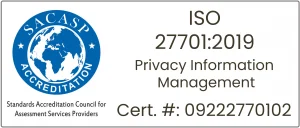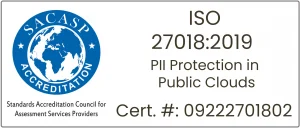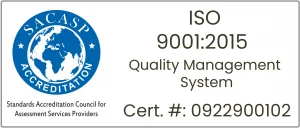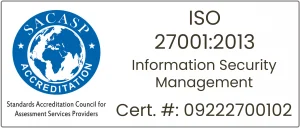© 2025 Macro Global. All Rights Reserved.
The USA remittance market has significantly evolved over the past few decades, transitioning from informal channels to regulated, formal methods driven by technological advancements and increased regulatory scrutiny.
Currently, the USA is one of the top remittance-sending countries, contributing significantly to the $700 billion global remittance market, which has a CAGR of about 3-4% over the past five years. This growth is fuelled by a growing diaspora, technological advancements, and strategic partnerships with fintech firms.
In this blog, we will explore the dynamics of the USA remittance market in B2B, P2P, and C2B. We will discuss regulatory requirements and emerging opportunities, offering insights for businesses to make informed decisions and enhance their competitiveness while highlighting cost-saving opportunities and technological advancements for individuals.
Current Market Size, Growth (CAGR) and Opportunities
The global remittance market is currently valued at approximately $700 billion, with the USA standing out as a leading country for remittance outflows. Over the past five years, the market has experienced steady growth, with a compound annual growth rate (CAGR) of around 3-4%. This upward trajectory reflects the increasing demand for remittance services driven by various factors, including an expanding diaspora population, technological advancements, and evolving consumer needs.
US Remittance Over the Past
Historically, the US remittance market relied heavily on informal channels, such as money transfer operators and informal networks. However, the shift towards regulated, formal systems began as the market matured, and regulatory frameworks were introduced. This transformation was driven by the need for greater transparency, security, and efficiency.
Present Market of Remittance
The US remittance market stands at the crossroads of innovation and expansion, a vibrant and competitive arena where technology is rapidly redefining traditional boundaries. As businesses and individuals alike navigate an increasingly globalised economy, the demand for efficient, secure, and cost-effective cross-border payment solutions has never been greater.
The U.S. remittance market is characterised by dynamic services across B2B, P2P, and C2B transactions, each influenced by technological advancements and shifting market dynamics.
- B2B Remittances: International trade and global supply chains are driving the growth of B2B remittances. The role of banks is declining as MTOs and fintech companies offer more competitive, transparent, and cost-effective solutions, creating opportunities for new market entrants.
- C2B Remittances: There is an increase in the use of digital platforms and the shift from traditional banking to MTOs, along with the role of fintechs recently. These factors have influenced in reducing costs and enhancing service delivery, spurring further market growth and innovation, resulting in convenience and efficiency.
- P2P Remittances: Growth of mobile payments and digital wallets, making transactions faster and more accessible have intensified the competition which is fuelled by the entry of MTOs and fintech firms. Overall, this has brought changes in offering lower fees and better customer experiences than traditional banks.
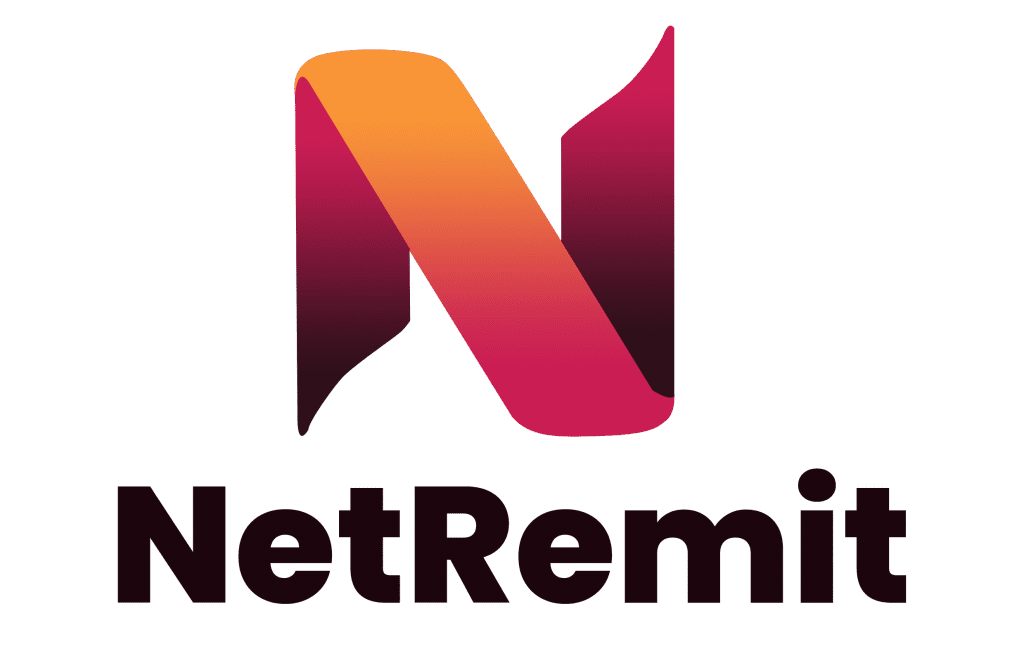
Future-Proofing P2P Payments: Rescuing a UK Bank from Legacy Security Traps with NetRemit
Future of Remittance
Looking ahead, several trends and factors are expected to shape the future of the US remittance market:- Regulatory Evolution: As the industry evolves, regulatory frameworks will also advance. Expect more streamlined compliance processes and updated regulations that reflect emerging technologies and global standards.
- Integration of AI and Machine Learning: Advanced analytics and artificial intelligence will enable more personalised and predictive services, enhancing customer experiences and operational efficiency.
- Increased Adoption of Digital Currencies: Cryptocurrencies and digital assets will become more prominent in remittances, potentially offering lower transaction costs and faster cross-border transfers.
Opportunities in the US Remittance Market
- Emerging Markets and New Customer Segments: The rise of underserved markets and niche customer segments presents opportunities for tailored remittance services that address specific needs.
- Enhanced Interoperability: Improved integration between different payment systems and financial networks will facilitate smoother and more seamless cross-border transactions.
- Green and Sustainable Remittances: Growing interest in sustainability will drive demand for environmentally friendly remittance solutions, including those that offset carbon footprints.
Challenges in the USA Remittance Market
- Regulatory Adaptability: Keeping pace with rapidly changing regulations and ensuring compliance across diverse jurisdictions can be complex and resource intensive.
- Technological Disparities: Variability in technology adoption and infrastructure in different regions may hinder the consistent delivery of remittance services.
- Customer Trust and Education: Building and maintaining trust, particularly with new technologies and digital currencies, will be essential. Effective customer education will be necessary to ensure confidence and understanding in the use of these services.
Total Remittances Sent and Received
The USA is a major player in the global remittance market, both as a sender and receiver. According to Knomad, in 2023, the USA received about $7.5 billion and was expected to send approximately $85 billion in remittances. These flows are vital for the economies of many recipient countries, providing a crucial source of foreign exchange and financial stability. The United States, with its large immigrant population, plays a significant role in the global remittance landscape as it sends substantial funds back home. Experts anticipate a compound annual growth rate (CAGR) of 5-7% for the US remittance market between 2022 and 2027.
Countries Receiving the Highest Remittances from the USA
The United States remains the largest source of remittances globally. In 2023, the top five remittance recipient countries were India ($125 billion), Mexico ($67 billion), China ($50 billion), the Philippines ($40 billion), and Egypt ($24 billion).
Several economies rely heavily on remittance inflows as substantial shares of their gross domestic product (GDP), emphasising the critical role of remittances in addressing current account and fiscal shortfalls. These economies include Tajikistan (48% of GDP), Tonga (41%), Samoa (32%), Lebanon (28%), and Nicaragua (27%).
Cost of Sending Remittances from the USA
According to the World Bank’s Remittances Prices Worldwide Database, remittance costs remain high, averaging 6.35% to send $200 as of the first quarter of 2024. Banks are the costliest channel for remittances, with an average cost of 12.66%, followed by post offices at 6.63%, money transfer operators at 5.35%, and mobile operators at 3.87%.
Breakdown by Country
The cost of sending remittances from the USA varies significantly depending on the destination, payment method, and service provider. According to the World Bank’s Remittance Prices Worldwide database, sending $200 to Mexico typically incurs an average cost of around 4.5%. In contrast, transferring the same amount to the Philippines generally costs about 6.5%.
For transfers to African countries, such as Nigeria, the cost can exceed 8%, reflecting the higher fees associated with sending money to certain regions. These variations highlight the importance of considering both costs and service options when making remittance decisions.
Market Share Analysis
Understanding the remittance market involves examining its key players, demographics, payment methods, and types of remittances. The remittance market includes Traditional Money Transfer Operators (MTOs) like Western Union and MoneyGram, Digital-First Remittance Services such as Remitly and Wise, Banks and Financial Institutions offering remittance services, and Mobile Network Operators providing mobile money transfer services.
Fintech companies are overtaking traditional banks due to lower costs, faster transactions, greater accessibility, and innovative solutions like blockchain.Market share data shows:
- Traditional MTOs: Western Union holds around 15% of the global market.
- Digital-First Services: Wise holds approximately 10% of the digital remittance market.
- Banks: Collectively, banks hold about 25% of the market.
- Mobile Network Operators: Significant in regions like Africa, where M-Pesa controls around 15% of the Kenyan market.
Demographics of the Remittance Receivers
In 2023, remittances from the US played a significant role in supporting economies in low and middle-income countries. South Asia received $189 billion, Latin America and the Caribbean received $156 billion, and East Asia and the Pacific received $133 billion. These regions rely heavily on funds sent by migrants in the US to support their families and communities.
India was the top recipient, with $125 billion in remittances, reflecting the substantial dependency on these funds. Other significant recipients included Mexico and the Philippines, which also received substantial inflows. These remittances are crucial for covering essential expenses such as education, healthcare, and daily living costs.
The steady flow of remittances from the US highlights their importance in alleviating poverty and promoting economic stability in recipient countries. These funds help sustain families and contribute to broader economic development, emphasizing the vital role of remittances in supporting global economies.
Payment Instruments of the Remittance
- Cash-to-Cash Transfers: Funds are sent in cash from one location and can be collected in cash at the recipient’s end.
- Bank Account Transfers: Money is transferred directly from one bank account to another, providing a secure and traceable option.
- Mobile Money: Transfers are made through mobile phone applications, allowing for convenient and often instant payments.
- Digital Wallets: Funds are sent to and received through electronic wallets, which can be accessed via smartphones or computers.
- Prepaid Cards: Remittances are loaded onto prepaid cards, which can be used for transactions or withdrawn as cash.
Types of Remittances
Types of remittances encompass different purposes and recipients, reflecting diverse needs and intentions:
- Personal Remittances: Sent by individuals to family and friends to provide financial support or assistance.
- Business Remittances: Transfers made for business transactions, such as payments for goods or services.
- Philanthropic Remittances: Donations sent to non-profits and charitable organisations to support various causes.
Regulatory Landscape
The remittance industry in the USA is subject to stringent regulations designed to prevent money laundering, ensure consumer protection, and maintain financial system integrity.
Key regulations include:
- The Dodd-Frank Act: Promotes transparency and fairness in financial transactions and establishes the Consumer Financial Protection Bureau (CFPB) to oversee and enforce consumer protection in the remittance sector.
- Anti-Money Laundering (AML) and Counter-Terrorist Financing (CTF) Laws: Require remittance providers to implement measures for detecting and preventing money laundering and terrorist financing, including customer due diligence, suspicious activity reporting, and record-keeping.
- Office of Foreign Assets Control (OFAC) Sanctions: Require compliance with regulations that prohibit transactions involving sanctioned countries, entities, and individuals, ensuring remittance companies avoid engaging with restricted parties.
These regulations are designed to safeguard the integrity of the financial system and protect consumers, while also ensuring that remittance services operate within a secure and compliant framework.
Technological Innovations in Remittances and Fintech
Technological innovations in remittances and fintech are revolutionising the financial services landscape by enhancing speed, security, and efficiency.
Key advancements include:
- Blockchain Technology: Facilitates near-instantaneous cross-border transactions and reduces fraud risks.
- Cryptocurrencies: Provides alternative methods for transferring funds, potentially lowering fees and speeding up processing times.
- Mobile Payments: Enables users to send and receive money directly from their smartphones, enhancing convenience.
- Digital Wallets: Stores electronic money and allows users to manage finances and make transactions electronically.
- AI and Machine Learning: Improves fraud detection and personalises customer experiences through advanced data analysis.
Fintech companies are transforming the remittance industry by reducing transfer costs through blockchain and digital currencies, enhancing user experiences with mobile apps and online platforms, and increasing the speed and reliability of transfers.
Innovations like Ripple, which uses blockchain technology for real-time cross-border payments, are setting new standards in the industry. For more information on these technological advancements, refer to the Finextra website.
Starting a Remittance Business in the USA
Starting a remittance business in the USA can be approached in various ways. The Do It Yourself (DIY) method involves building the business from scratch, which can be expensive and time-consuming, requiring substantial investment in licensing, technology, and operations.
Money Service Businesses (MSBs) like Western Union or MoneyGram, benefiting from their existing licensing and regulatory compliance, although branding control is limited.
Partnering with a Remittance-Technology-as-a-Service (RTaaS) provider offers an efficient solution, as the provider manages compliance, banking, and payments, allowing the business owner to focus on customer acquisition while navigating regulatory and operational challenges.
Let us investigate various steps involved in detail
- Legal Registration and Compliance: Register the business with federal and state authorities, obtain a Money Transmitter Licence (MTL) from each state, and register with FinCEN. Some states may require a surety bond. Implement robust AML and KYC procedures, including transaction monitoring, regular audits, and secure customer information.
- Regulators and Partnerships: Understand and comply with regulations from FinCEN, the CFPB, and state banking departments. Build partnerships with banks and payment networks for reliable transactions.
- Technology and Marketing: Invest in secure, efficient technology for transaction processing and data security. Develop a marketing strategy using digital channels, social media, and community partnerships to attract and retain customers.
Wrapping Up
As the remittance industry evolves, businesses must adapt to a landscape shaped by technological advancements and stringent regulations. For insights on starting a remittance business in the USA and to explore partnership opportunities.
In this dynamic environment, companies like Macro Global are at the forefront with their cutting-edge solutions, driving efficiency and expanding global reach. The innovative cross-border payment suite, NetRemit, exemplifies the industry’s future. To explore partnership opportunities, call +44 (0)204 574 2433 or email salesdesk@MacroGlobal.co.uk. Our executives are ready to discuss your needs and tailor solutions to fit your requirements.
Ready to get started?
We can’t wait to show you what’s possible with NetRemit.
Related Posts
10 November 2025 NetRemitNextGen Banking
In Sync with the Industry’s Direction: Macro Global’s Perspective on Money20/20 USA 2025
Know how Macro Global reflects the spirit of Money20/20 USA 2025 by embracing intelligent fintech, agile infrastructure, and cross-border remittance innovation.
29 October 2025 NetRemitNextGen Banking
Money Transmitter Licensing Across the U.S.: A State-by-State Overview
Explore how each U.S. state money transmitter license works as we decode everything from rules, processes to compliance essentials for remittance businesses.
29 August 2025 NetRemitNextGen Banking
FCA PS25/12: Future of Safeguarding Regime for Payment & E-Money Firms. Compliance Priorities and Opportunities Explained
FCA PS25/12 compliance guide: Payment Institutions, EMIs & SPIs must tighten reconciliations, audits & reporting to safeguard cross-border payments.

